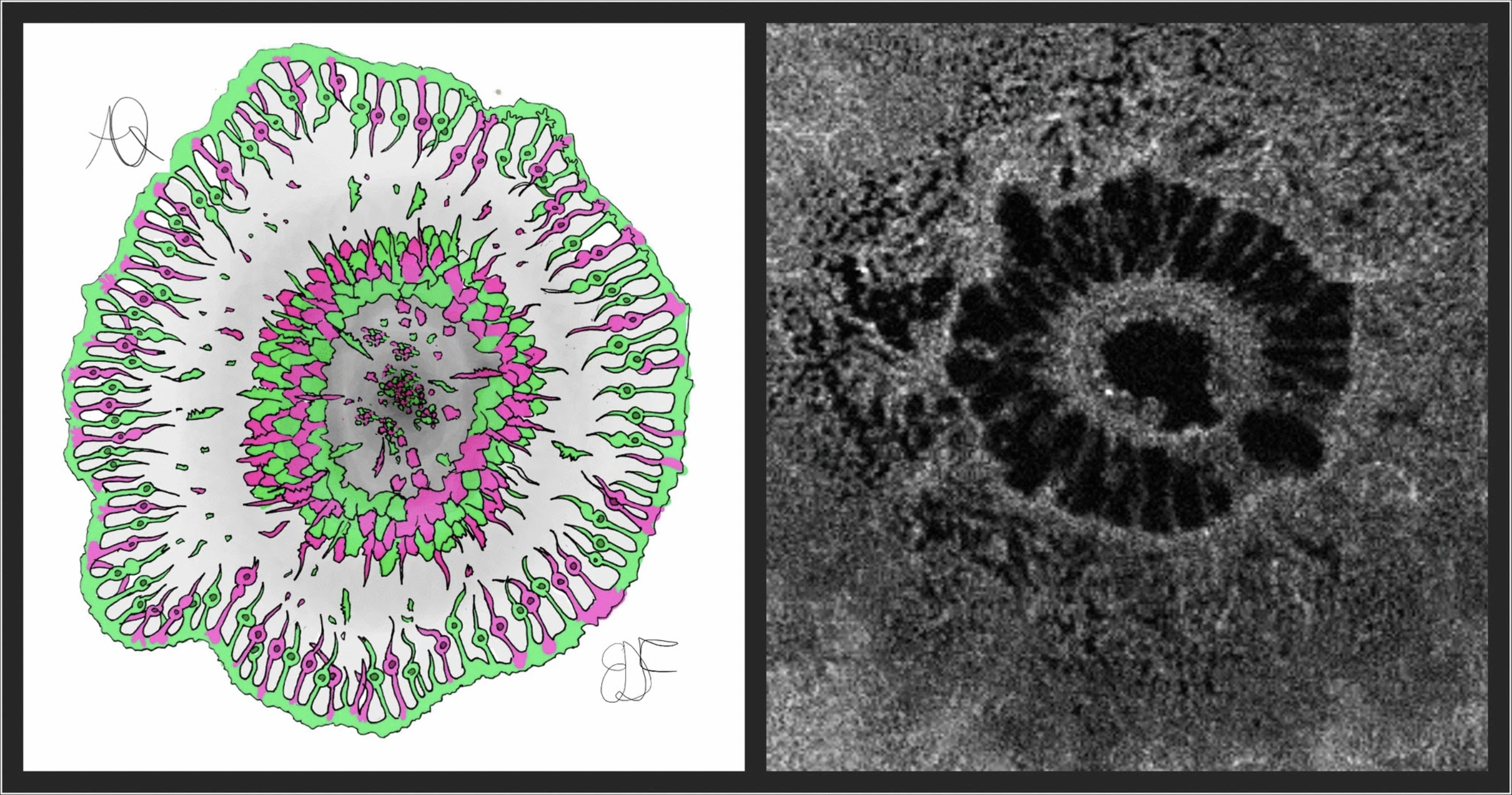A study from 2023 identified a qualitative metric to assess photoreceptor loss in patients with full-thickness macular holes (FTMH), which may help clinicians estimate postoperative visual recovery. The author characterized border hole morphology into two subtypes: smooth and bumpy. The latter subtype was found to be associated with photoreceptor disruption that negatively influenced functional and anatomical recovery.
While that investigation focused on the number of photoreceptor cells lost, researchers of a new study hypothesized that “a deeper insight into the macular hole potential recovery after surgery could be done by focusing on residual photoreceptor cells on the hole hedge.” The team used en face OCT to quantity these photoreceptor remnants and calculate the photoreceptor integrity index (PIIN) to determine whether the novel metric can predict FTMH postoperative recovery.
 |
| In a new study, photoreceptor integrity correlated to functional and anatomical visual outcomes of full-thickness macular hole. Once validated in further studies, the quantitative metric may help clinicians better predict post-op visual recovery and set realistic expectations for patients. These images from the study, of an illustration (left) and en face OCT scan (right) scan, show densely packed photoreceptors at the border of the hole, with disrupted ones that fall off the border and lie over the RPE as remnants. Considering the oxygen’s role in photoreceptors nutrition through choroid, at the maximum height of neurosensory detachment and by focusing at the end of the external limiting membrane, the hypoxic phenomenon may be exacerbated due to the distance from the first oxygen and nutrients source, the researchers explain in their paper on the work. Photo: Quarta A, et al. Graefes Arch Clin Exp Ophthalmol. 2024;262:86-101. Click image to enlarge. |
“The PIIN, calculated as the ratio of photoreceptor area to lumen hole area measured at customized segmentation, was correlated with the minimum and base diameters of the hole, positive change in BCVA, preoperative ellipsoid zone defect, preoperative external limiting membrane (ELM) defect and changes in ellipsoid zone and ELM over the six-month follow-up period,” the researchers explained in their paper.
Thirty-eight eyes of 38 patients with FTMH were enrolled in the study and imaged before and after surgery. The results showcased that a higher PIIN correlated positively with better postoperative recovery over six months, marked by significant improvements in BCVA. A secondary analysis confirmed the use of PIIN as a clinically significant predictor of postoperative visual outcomes.
“As the distance of the macular hole borders from the RPE increases due to alterations of the vitreoretinal interface, there may be a decrease in the oxygen supply to the photoreceptors and a reduction in the availability of nutrients,” the researchers explained in their paper. “Moreover, compared to the base of the hole, the retina at the macular hole’s edge is likely more prone to increased wall shear stress supported by vitreous dynamics from eye movement. The PIIN considers the photoreceptors at the highest edge of the hole, i.e. the highest point of ELM, where the oxygen deprivation is more severe.”
By correlating photoreceptor preservation with recovery metrics, such as PIIN, optometrists may be able to better predict the efficacy of surgical interventions and set more realistic expectations for recovery times and outcomes. The authors caution, however, that larger studies are needed before PIIN can be relied upon in clinical practice.
| Click here for journal source. |
Quarta A, Govetto A, Porreca A, et al. Development and preliminary evaluation of a novel preoperative index for quantitative analysis of photoreceptor loss in full-thickness macular holes. Graefes Arch Clin Exp Ophthalmol. 2024;262:86-101. |


